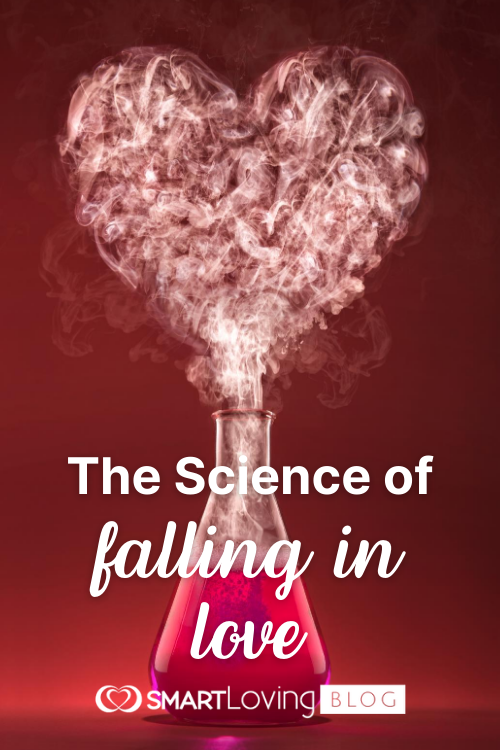The Science of Falling in Love

Falling in love is a common experience and a wonderful one. It sweeps us up in a euphoric passion that dominates our thoughts day and night. But is there more to it than simple emotions?
Romantic love, and its impact on us, has been the subject of study for millennia. Philosophers from ancient times have mused on it, theologians have divined it and poets have waxed lyrical about it.
More recently, it has become a subject of interest to scientists from the fields of psychology, sociology and neurobiology. Consequently, we have a new term for the phenomenon of ‘falling in love’ – limerence.
For most people, limerence is experienced very powerfully at the beginning of the relationship and is associated with emotional attachment and strong sexual attraction. It’s a wonderful experience, but it’s transitory. This presents a problem because we often mistake limerence for ‘real love’.
Falling in love is powerfully kick-started through limerence, but we then need to build on and deepen our love if it is to endure.
When the feelings we experience in limerence subside, as they inevitably do, we are not ‘falling out of love’. Rather, we are passing into a new stage of love that allows us to form a deeper, more enduring bond.
The neurochemistry of love
All emotions have a biochemical component. What we experience as limerence is a mixture of several different things happening in the brain. Powerful neurotransmitters (brain chemicals) including Noradrenaline, Phenylethylamine (PEA), and Dopamine surge when we’re in a state of limerence.
Noradrenaline is associated with an increase in energy and alertness. Sustained high levels speed up metabolism, reducing our appetite and increasing our wakefulness. We feel energised, optimistic and empowered.
PEA reduces inhibitions so we become less risk adverse and more trusting in relationship. Limerent couples will divulge a great deal of very personal and private information to each other, even though the character of their partner is still unknown.
Dopamine is associated with the addiction pathways in the brain and limerence shares a lot of characteristics with addictive behaviours. In this case, we become ‘addicted’ to our beloved; we crave more and more time with them, and when separated we pine for their return.
Together, this cocktail of neurotransmitters, create the euphoria associated with limerence. It’s a truly wonderful experience that draws us deeper into relationship with each other.
In our early relationship, we were the textbook description of the above. The first six months of our romance were spent living in two different cities as Byron completed his PhD in Adelaide. We pined for each other during this time and expended huge amounts of energy seeking ways to connect in a pre-email, pre-mobile phone world.
Our kids look at us weirdly when we talk about this challenge but in those days, long distance phone calls were metered and very expensive. Byron took on a second job, working in a bar so that he could phone Francine back in Sydney, and her parents imposed a strict time limit to avoid her racking up huge phone bills.
Letter writing became a daily habit and we counted down the days until Byron could submit his thesis and return to Sydney. Sigh… the things we did for love! Despite the challenges, it was totally thrilling!
When limerence ends
And here’s the catch. Nature tends to homeostasis. That means, that it likes to stabilise and limerence is an unstable state. Eventually we need to eat and sleep and pay attention to the normal things of life like our job and other responsibilities.
After a period of time the intensity of the euphoric feelings wane and studies put this to between six and eighteen months. At first, we barely notice that our enthusiasm for our beloved is declining, but then we start to notice those annoying habits that seemed so cute and adorable before.
We find ourselves more discerning and critical of the other, less willing to overlook a fault or limitation and more demanding in our expectations. Energy levels, appetite and sleep needs return to normal levels and our old preoccupations move back into our awareness.
And then we have our first major disagreement. Usually, it’s a simple misunderstanding that is quickly resolved and happily forgiven. We’ll go on to have many of these, though we may not so easily forgive if it becomes a recurring issue with no attempt to change.
For some, the weight of these disagreements will overwhelm the goodwill in the relationship and one or both will conclude that they are not intended for each other. For others, these setbacks become part of the learning curve as we discover how to love, forgive, reinvest and ultimately thrive together.
It’s common for couples to look back on those early days in their limerent state and wonder if we have fallen out of love.
It can certainly feel that way, especially if we make the mistake of thinking that limerence is real love. But it’s not. It was just the introduction.
We’re not saying that limerence is a bad thing. Limerence is a gift and part of God’s plan. It gets us out of our comfort zone and motivates us to take a risk on love.
Nor are we saying that love has nothing to do with emotion. We’re saying that love is much more than just an emotion.
The trouble starts when we assume those euphoric limerence feelings are the benchmark of ‘being in love’.
Nature’s trick?
Limerence is not love. Real love, a more mature love, starts to grow when the intensity of the euphoria abates. That’s when our will comes into play, when we choose to act in loving ways for the good of the other.
Real love involves self-sacrifice and putting the other before ourselves. It takes a wilful commitment to persist in our choice to love, even when our emotions would have us walk away or withdraw in a sullen ‘humpf’.
In the broader context of a full relationship over decades, limerence is like a taster. It’s just one small, albeit very nice, stage in a relationship that will have many ups and downs, forward surges and anxious backtracks.
As wonderful as it is, it’s helpful to understand the nature of limerence so that we can avoid becoming fixated on it or giving it more credence than it deserves. It can also help avoid the mistake of walking away from a perfectly good relationship because it no longer ‘feels’ like it used to when we were limerent.
Like the prologue before a great love story, limerence creates the context and invitation into an epic adventure. When it wanes, it opens the space for a more mature, intentional love to take root and bloom.
And this is the kind of love that has the capacity to endure through good times and bad.




